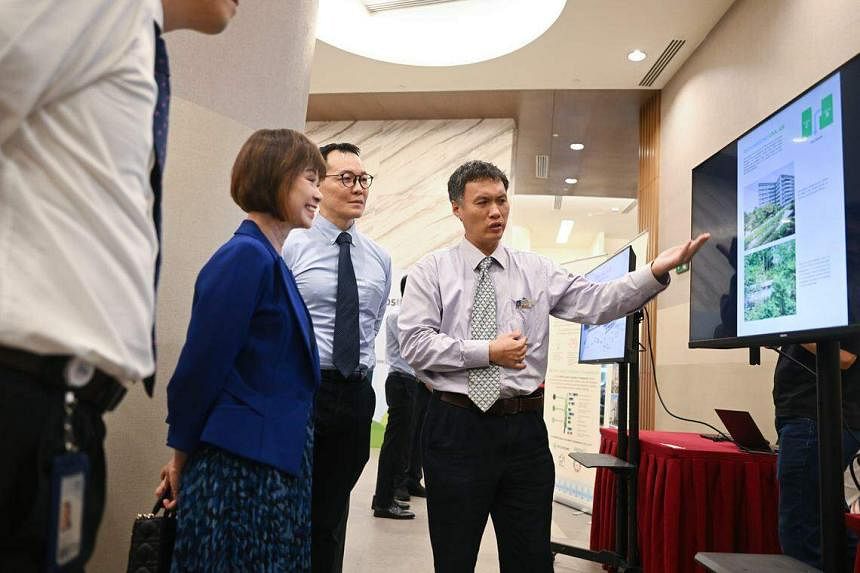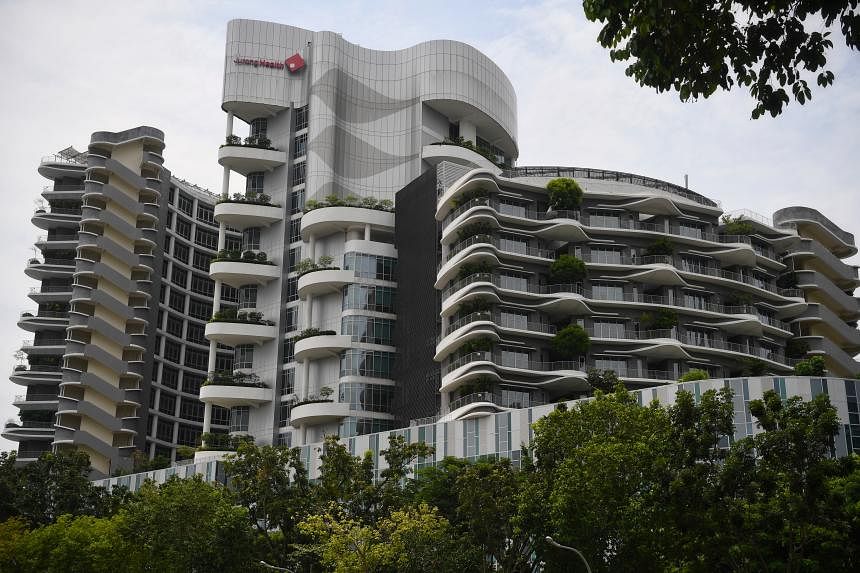SINGAPORE – A cooling system that will help to reduce the costs and emissions associated with air-conditioning could be on the cards for healthcare facilities in the Jurong area.
The JurongHealth Campus (JHC), which includes the Ng Teng Fong General Hospital and Jurong Community Hospital, said it is in consultation with a utilities company to explore the feasibility of implementing a district cooling system in the area. It did not name the company.
This is part of its efforts to green their processes in the power-hungry healthcare sector that operates energy-intensive equipment round the clock.
The global healthcare sector makes up more than 4.4 per cent of net global climate emissions. This puts it almost on par with Russia, which was the world’s fourth-largest emitter in 2023.
JHC initiated the conversations in the second quarter of 2023, said National University Health System energy and water task force chairman Ng Kian Swan, in an interview with The Straits Times on the sidelines of an inaugural healthcare sustainability symposium on April 22.
“We are energy intensive facilities and this district cooling system gives us an opportunity to green the whole hospital,” he said.
District cooling technology involves generating chilled water in a centralised location, and then sending the chilled water through a network to multiple buildings where it is used for air-conditioning needs. This cooling strategy leverages economies of scale by sharing chiller capacity, and helps to slash the carbon footprint.
There are district cooling networks in areas like Marina Bay and Tengah, which are greenfield sites where developments are planned on a clean slate. It is more complicated to implement district cooling at sites where buildings already have their own existing chiller systems.
Retrofitting Tampines town centre with such a system is under way, with works set for completion by the first half of 2025. The buildings to be connected in the network are Century Square, CPF Tampines Building, Income At Tampines Junction, OCBC Tampines Centre 2, Our Tampines Hub, Tampines Mall and Tampines 1.
JHC is in discussion with potential partners like other building operators in Jurong Gateway about district cooling adoption.
Mr Ng, who is also the chief operating officer of JHC, said that if the project were to go ahead, JHC would be the anchor tenant.
“If we aggregate all the energy provisions for the other stakeholders in the area, collectively, all our energy consumption will go down,” he said.
At the event titled Heal Our Patients, Heal Our Planet, held at Ng Teng Fong General Hospital, Senior Minister of State for Sustainability and the Environment Amy Khor said there are multiple reasons why the healthcare sector consumes significant amounts of energy.
Healthcare facilities require vast amounts of energy for ventilation, air-conditioning and medical equipment due to 24/7 operations and stringent environmental controls. Substantial amounts of water are also needed for sterilisation, surgical operations and medical research.
A significant amount of waste, such as hazardous medical waste and pharmaceutical waste, is generated, and the collection, treatment and disposal of such waste adds to the overall environmental footprint of the sector.
“The healthcare sector therefore plays a key role in mitigation, both as a sector affected by, and as a key contributor to climate change,” said Dr Khor.
She added: “Initiatives to achieve sustainability in healthcare would include having energy and water efficient facilities, waste reduction, sustainable sourcing of supplies, and even promoting preventive healthcare to reduce long term healthcare costs and environmental burden.”

Representatives from other public healthcare clusters also shared their various sustainability efforts and results.
SingHealth’s chief operating officer for environmental sustainability Tan Tai Kiat said the cluster has introduced various initiatives in areas like reducing single-use plastics, managing electricity and water consumption, and improving energy efficiency.
“For instance, since July 2022, frozen food products at Sengkang General Hospital’s kitchens are thawed with existing chillers instead of running water. This switch has resulted in annual savings of approximately 657,000 litres of water,” he said.
“In addition to repurposing hospital linen and curtains, Singapore General Hospital also recycles disposable stainless steel instruments. Since 2020, the hospital has recycled more than 15,000kg of such instruments.”
National Healthcare Group’s chief of corporate services Darion Chong said each healthcare institution in the cluster is guided by their respective sustainability committee on efforts.
“(Each committee) engages the staff for ground-up initiatives and works with clinical departments to adopt sustainable clinical practices,” said Mr Chong.
He added that they include the use of more environmentally-friendly anaesthetic gases and inhalers, lowering the air-conditioning temperature across facilities, and reducing pharmaceutical packaging by switching to more sustainable packaging sources.


